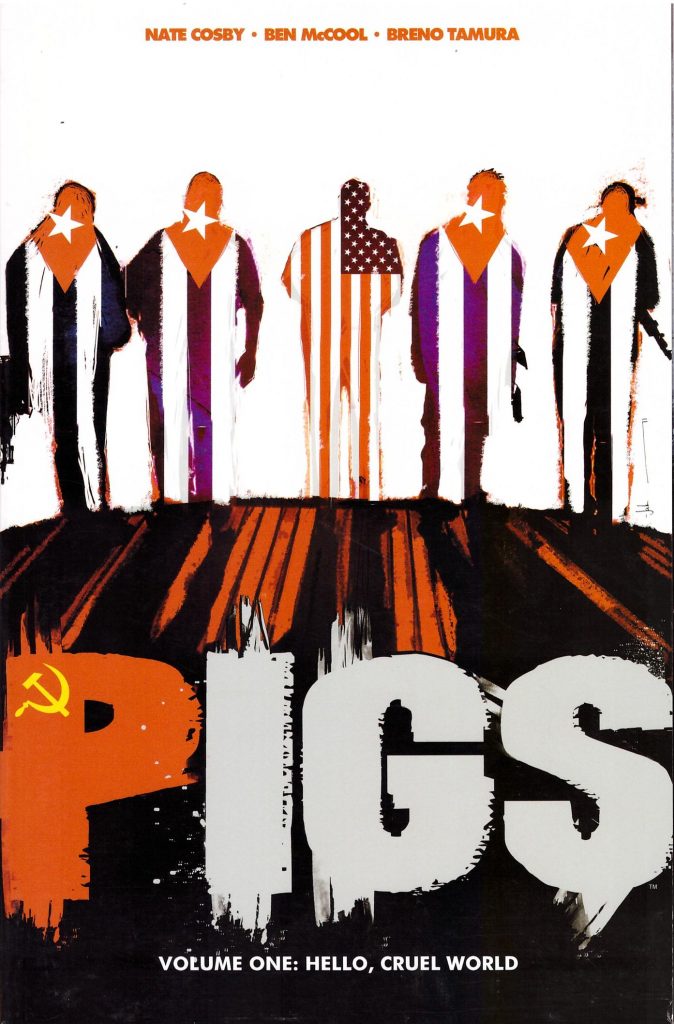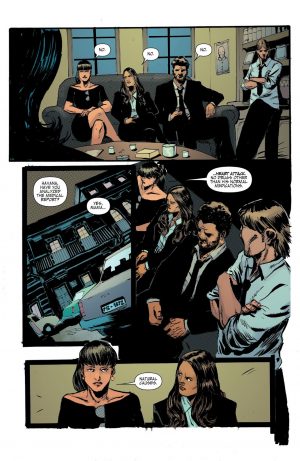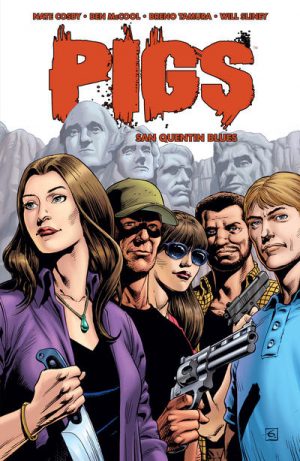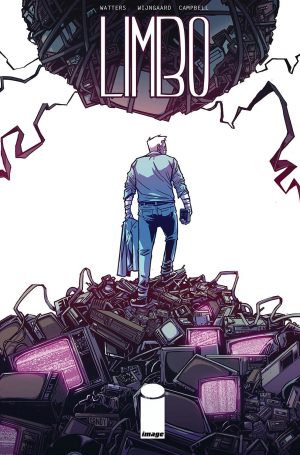Review by Ian Keogh
Nate Cosby and Ben McCool’s starting point for Pigs seems to have been that more and more Americans are likely to question what they’re being told. So what of the children of the demons of old? What do they now believe? After all, citizens of the former Soviet Union were similarly indoctrinated, perhaps less subtly, with an ideology that also hardly represented the world accurately.
A nicely scripted sequence set in 2011 runs through the opening chapter, a fearless elderly Russian woman being interrogated and providing sardonic responses to aggressive questioning. Other scenes are mixed in leading to a fantastic chapter ending. The next chapter picks up on people seen arriving in Miami and develops into equally terrifying circumstances, Cosby and McCool presenting nicely twisted action sensibilities. The next two chapters also have horrible, horrible scenes as we learn how the group of adults we’re seeing newly arrived in Miami learned their trade in Cuba. They’re great.
The deal is that in 1961 a group of loyal Soviets were planted in Cuba with a set of codes that would activate a specific mission when passed on. As these people aged and the mission never came, they remained loyal to their ideals and trained their children in the belief that one day they would be tasked to take on the mission instead. Now that day has come. Will the children be minded to carry it out?
With a killer idea for a plot and some well devised horrific scenes, Pigs should be really attention-grabbing, and that it only rates slightly better than average is down to primary artist Breno Tamura. There’s the occasional nice page, and Tamura distinguishes a large cast well, but Pigs is dull-looking, with people seen from odd angles, distorted faces and puzzling mistakes. One of the more impressive pieces is a full page looking up at someone pointing a rocket launcher. Fair enough one arm would be bent holding the device, but as drawn by Tamura it looks as if the other arm is also missing. It’s not, but it takes study to work out why that’s the case. For the final chapter Will Sliney contributes sequences set in the past, and they’re considerably better drawn, the only problem being that he doesn’t appear to have seen any of Tamura’s earlier flashback scenes and draws the main cast looking a lot younger.
In keeping with the remainder of Hello, Cruel World, the ending is a killer, and the story continues in San Quentin Blues.





